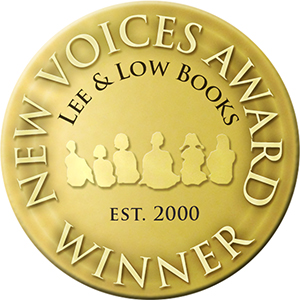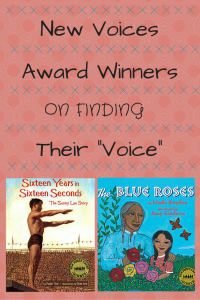 This year marks our sixteenth annual New Voices Award, Lee & Low’s writing contest for unpublished writers of color.
This year marks our sixteenth annual New Voices Award, Lee & Low’s writing contest for unpublished writers of color.
In this blog series, past New Voices winners gather to give advice for aspiring writers. This month, we’re talking about what “voice” means to an author.
When discussing the various elements of writing craft, “voice” seems to be the most difficult to pin down. You can’t plot it on a chart or even clearly define what the word means, and yet it is one of the most important elements of a story. Editors (and readers) are always looking for strong, distinct voices. It is an invisible string that echoes throughout a story and pulls the reader in. And when an author or character’s voice is nonexistent or inconsistent, it is the first thing we notice.
Voice builds trust between the author, characters, and readers. To develop a strong voice that will ring true, an author needs to understand both the story and him/herself as a writer. What is the tone of the story? Who are your characters? If a key feature—gender, age, cultural background—of the main character changes, would the voice change? It should! There are many ways to approach “voice,” and below, Linda Boyden and Paula Yoo share their techniques.
Linda Boyden, author of The Blue Roses, New Voices Winner 2000
The Blue Roses was my first published book. I had written many picture book manuscripts prior to it, most of which are still gathering dust and mold, but now I see how that process was vital for me to evolve as a writer. I developed the voice of this main character, Rosalie, by experimenting. I wrote many versions of the book. I considered writing it in third person, having one of the adult characters do the narrating for about a nano-second; in my heart I knew this was Rosalie’s story and no one else’s, but that didn’t stop me from more experimenting. I tried having her voice be that of a child, but Papa’s death would have been too harsh an experience for a child to deal with objectively. Instead, Rosalie narrates as her adult self, after having had enough time to smooth the edges of her loss. So experiment until you understand the heart of your character; that’s where you’ll find their true voice.
Paula Yoo, author of Sixteen Years in Sixteen Seconds, New Voices Winner 2005
For me, voice comes out of nowhere. I can’t predict when I will find the “voice” of my story. Voice is not only the way my main character narrates the story (his/her style of speaking, their point of view, their personality) but also in the tone of the entire story (humorous, tragic, touching). Sometimes I find my “voice” AFTER I do a ton of research and preparation, such as figuring out the story beats and plot twists and the character’s emotional journey/arc. Sometimes the voice finds ME first—I’ll just start writing a story from the point of view of a character that has taken over me because he/she has something important and unique to say. Ultimately, I think “voice” for me comes from my heart. What moves me emotionally when I write? What about a story or character makes me laugh or cry? For me, “Voice” is the heart of my story—what emotions do I want to bring out in not only in my readers but also in myself? You can write a book that has the most original and surprising plot, the most compelling and fascinating characters, and a unique setting. But if there is no EMOTION, then that book falls flat. That’s where “Voice” comes in—“Voice” determines the emotion behind the story. I wish I could give a more specific answer with facts and evidence, but when it comes to writing from the heart, there is no formula.








